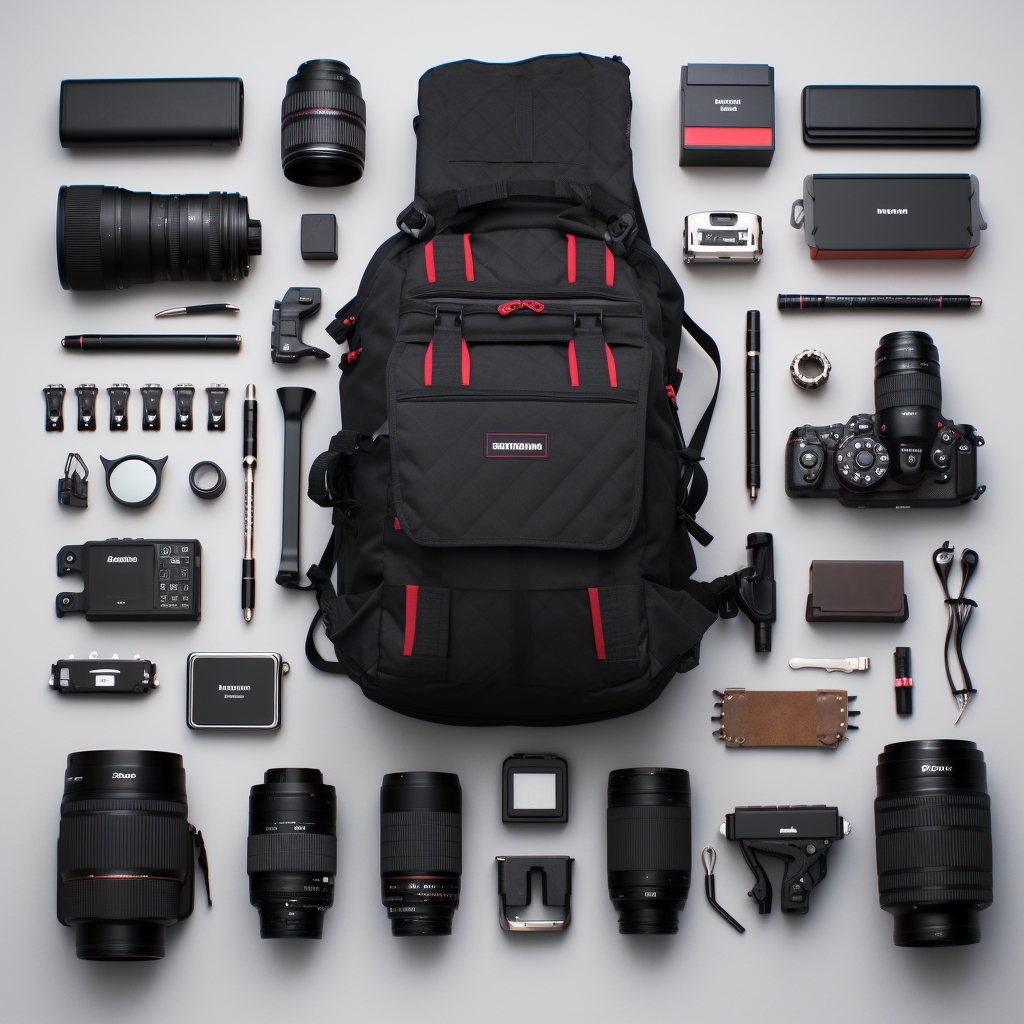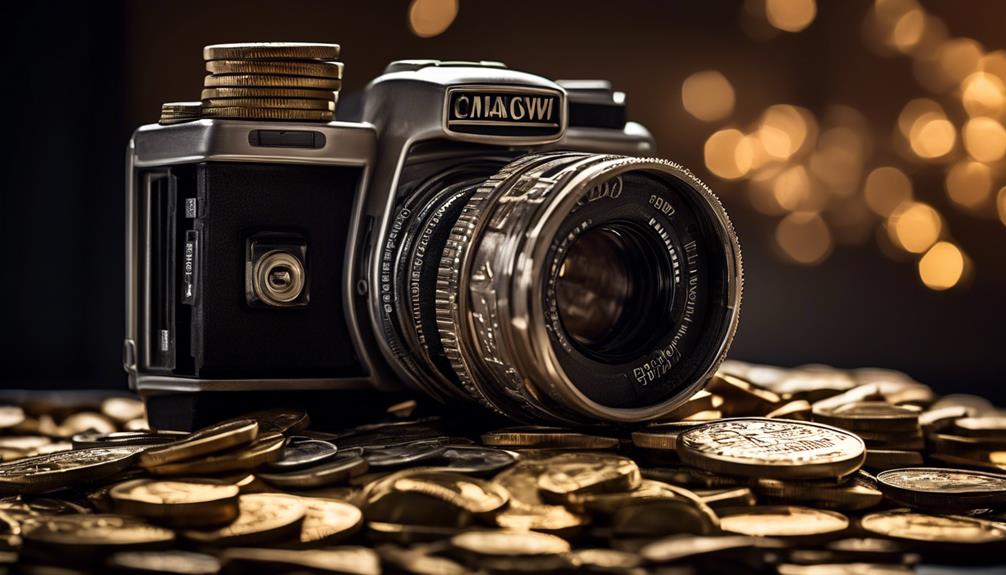Please note this post may contain affiliate links picked by me (Jay) that I have deemed may be of interest or relevant to you the reader of this.
These links do not affect the cost of the thing if you decide to purchase but i may get a little money if you choose to purchase.
For more information on my affiliate link policy click here.
As a photography business owner, I know the importance of having the right gear to capture stunning images. Did you know that 89% of successful photographers use professional-grade cameras and lenses? In this article, I will share the essential gear you need to take your photography business to the next level. From lighting equipment to editing software, I’ll cover all the tools necessary for innovation and creativity in the ever-evolving world of photography. Get ready to elevate your craft with the right gear!
Key Takeaways
- Professional-grade cameras and lenses are crucial for successful photographers.
- Lighting equipment, including studio strobes and light modifiers, is essential for enhancing image quality.
- Tripods and stabilizers ensure steady and precise shots, with recommended options for different types of photography.
- Investing in high-quality editing software and tools, as well as storage and backup solutions, is necessary for staying competitive and protecting valuable work.
Camera and Lenses
One of the most important pieces of gear I need as a photography business owner is a high-quality camera and a selection of lenses. These tools are essential for capturing stunning images and delivering top-notch results to my clients. When it comes to camera accessories, there are a few key items that I always have on hand to enhance my photography techniques.
First and foremost, a sturdy tripod is a must-have. It provides stability and eliminates any unwanted camera shake, especially when shooting in low-light conditions or capturing long-exposure images. Additionally, a remote shutter release allows me to trigger the camera without touching it, further reducing the risk of camera shake.
Another valuable camera accessory is a versatile camera bag. It not only protects my camera and lenses from damage but also helps me stay organized and carry all my gear conveniently. With multiple compartments and padding, it ensures that everything is securely stored and easily accessible.
In terms of lenses, I believe in investing in high-quality glass. Different lenses serve different purposes, allowing me to capture a wide range of shots. A wide-angle lens is perfect for landscape photography, while a telephoto lens is ideal for capturing distant subjects. Additionally, a prime lens with a wide aperture enables me to achieve that beautiful shallow depth of field effect.
As photography techniques continue to evolve, it is crucial to stay up to date with the latest camera accessories. These tools not only enhance the quality of my work but also allow me to explore new creative possibilities.
Now that we have discussed the importance of camera gear, let’s move on to the next essential piece of equipment: lighting.
Lighting Equipment
Now let’s delve into the essential lighting equipment that I rely on as a photography business owner. Lighting is a crucial aspect of photography, as it can dramatically enhance or detract from the overall quality of an image. To achieve optimal lighting, I utilize a variety of lighting techniques and setup tips.
One of the lighting equipment pieces that I find indispensable is a good quality studio strobe or flash. This powerful light source allows me to create a controlled and consistent light output, which is essential for professional photography. I also make sure to have a variety of light modifiers, such as softboxes, umbrellas, and reflectors. These modifiers help me shape and diffuse the light, allowing for more flattering and visually interesting results.
Another important lighting tool in my arsenal is a set of wireless triggers. These devices enable me to trigger my off-camera flashes remotely, giving me the freedom to experiment with different lighting setups without being restricted by cables. Additionally, I always carry a reliable light meter to accurately measure the light and ensure proper exposure.
When it comes to lighting setup tips, I always aim for a three-point lighting setup. This setup consists of a key light, a fill light, and a backlight. The key light is the main light source and provides the primary illumination on the subject. The fill light helps to balance the shadows created by the key light, while the backlight adds depth and separation from the background.
Tripods and Stabilizers
As a photography business owner, I rely on tripods and stabilizers to ensure steady and precise shots. These essential tools are crucial for capturing professional-quality images, especially in challenging shooting conditions. Whether I’m photographing landscapes or shooting weddings, having the right tripod and stabilizer can make a significant difference in the final results.
To help you make an informed decision, here are some recommendations for the best tripods for landscape photography and tips for using stabilizers in wedding photography:
| Tripod Model | Key Features |
|---|---|
| Manfrotto MT190XPRO4 | Aluminum construction, adjustable leg angles, 90-degree center column, easy-to-use locking mechanisms |
| Gitzo GT1545T | Carbon fiber construction, compact and lightweight design, high load capacity, precise leg angle selection |
When it comes to landscape photography, stability is paramount. The Manfrotto MT190XPRO4 and Gitzo GT1545T tripods offer exceptional stability while still being portable enough to carry on outdoor shoots. Their adjustable leg angles and locking mechanisms allow for precise positioning, ensuring level shots on uneven terrain.
Wedding photography often requires capturing fast-paced moments, making stabilizers invaluable. Here are some tips for using stabilizers effectively:
- Practice with your stabilizer before the wedding to get comfortable with its operation.
- Use a lightweight camera setup to reduce strain on your arm and increase stability.
- Experiment with different modes and settings to find the right balance between stabilization and smooth camera movement.
- Take advantage of the stabilizer’s follow focus capabilities to keep your subject in sharp focus while moving.
- Incorporate creative techniques, such as panning or tracking shots, to add dynamism to your wedding photos.
Editing Software and Tools
I rely on editing software and tools to enhance and refine my photography as a business owner. Photo editing software plays a crucial role in the post-processing techniques that I implement to bring out the best in my images. With the advancements in technology, there are now a plethora of options available that offer innovative features to help photographers achieve their vision.
One of the most popular photo editing software in the market is Adobe Photoshop. It provides a wide range of tools and functionalities that allow me to manipulate and enhance my images with precision. From adjusting exposure and colors to removing unwanted elements, Photoshop gives me the flexibility to create stunning visuals that captivate my audience.
Another powerful editing tool is Lightroom, also developed by Adobe. Lightroom is specifically designed for photographers and offers an intuitive interface that simplifies the editing process. It allows me to organize and categorize my photos, apply presets, and make batch edits, saving me valuable time and effort.
In addition to these software programs, there are also various plugins and tools available that can further enhance the editing process. These plugins offer specialized features such as noise reduction, sharpening, and creative effects, allowing me to elevate my images to new levels.
As a photographer and business owner, investing in high-quality photo editing software and tools is essential to stay competitive in the industry. By utilizing these tools effectively, I can bring my creative vision to life and deliver exceptional results to my clients. So, whether you are a professional photographer or an enthusiast, embracing the power of editing software and tools is crucial for taking your photography to the next level.
Storage and Backup Solutions
How can photography business owners ensure the safety and accessibility of their valuable image files? Storage and backup solutions are essential for protecting your work and keeping it accessible at all times. Here are three options to consider:
- Cloud storage: Storing your image files in the cloud offers a secure and convenient solution. With cloud storage, you can access your files from any device with an internet connection. This means you can easily share and collaborate on projects with clients or team members. Additionally, cloud storage providers often have built-in backup systems, ensuring that your files are protected in case of hardware failure or other disasters.
- External hard drives: While cloud storage is convenient, it’s always a good idea to have a physical backup of your files. External hard drives provide a reliable and portable option for storing and backing up your images. They offer large storage capacities and fast transfer speeds, allowing you to easily access and transfer your files when needed. It’s recommended to have multiple external hard drives and regularly update your backups to ensure the safety of your files.
- Hybrid solutions: To maximize security and accessibility, you can consider combining cloud storage with external hard drives. This hybrid approach provides the benefits of both options, giving you the flexibility to access your files from anywhere while having a physical backup as an additional layer of protection.
Frequently Asked Questions
How Do I Effectively Market My Photography Business to Attract Clients?
To effectively market my photography business and attract clients, I focus on social media advertising and networking events. These strategies help me reach a wider audience and build connections within the industry. Through targeted ads and engaging content on social media platforms, I showcase my work and entice potential clients. Attending networking events allows me to meet other professionals and collaborate on projects, expanding my reach even further. By utilizing these methods, I am able to consistently attract new clients and grow my business.
What Are Some Important Legal Considerations for Photography Business Owners?
When it comes to running a photography business, there are important legal considerations to keep in mind. One of the first steps is obtaining the necessary photography business licensing to operate legally. Additionally, having solid photography business contracts in place is crucial for protecting your work and ensuring clear agreements with clients. These legal aspects are essential for a successful photography business and should not be overlooked.
How Can I Create a Unique Brand Identity for My Photography Business?
Creating a unique brand identity for my photography business is crucial for standing out in a competitive market. To do this, I focus on implementing effective branding strategies that differentiate my business from others. One key aspect is creating a unique logo that represents my style and values. By investing time and effort into developing a distinct visual identity, I can attract clients who resonate with my brand and establish myself as an innovative photographer.
What Are Some Common Challenges Faced by Photography Business Owners and How Can They Be Overcome?
Overcoming competition and building a strong online presence are common challenges faced by photography business owners. It’s crucial to differentiate yourself from others by offering unique services or specializing in a niche. To build a strong online presence, invest in a professional website and optimize it for search engines. Use social media platforms to showcase your work and engage with potential clients. Collaborating with influencers or participating in photography competitions can also help increase your visibility and credibility.
How Can I Efficiently Manage My Photography Business Finances and Keep Track of Expenses?
Managing financials and keeping track of expenses are crucial aspects of running a photography business. It can be challenging to efficiently handle these tasks without the right tools and strategies. However, I’ve discovered innovative solutions that have revolutionized the way I manage my business finances. By utilizing cutting-edge software and mobile apps, I can easily track expenses, generate financial reports, and stay on top of my financial goals. These tools have streamlined my workflow and allowed me to focus on what I do best – capturing unforgettable moments.
Conclusion
In conclusion, as a photography business owner, having the right gear is crucial for success. Investing in high-quality camera and lenses, lighting equipment, tripods and stabilizers, as well as editing software and tools, will ensure that you can capture and create stunning images. Additionally, having reliable storage and backup solutions is essential for protecting your valuable work. For example, imagine a wedding photographer who captures breathtaking moments using a professional camera and lenses, enhancing them with advanced editing tools, and delivering flawless images to the happy couple, creating cherished memories for a lifetime.


